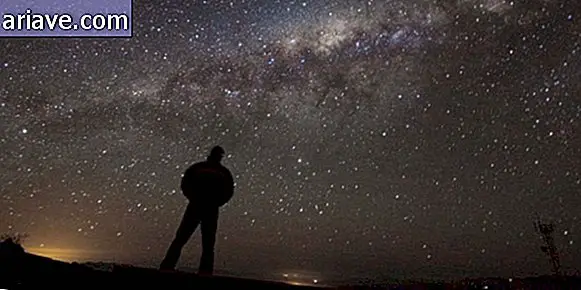Animations suggest that the speed of light may not be that fast
Do you know how fast light travels in a vacuum? No need to go searching, no! We tell you: the absurd 300 thousand kilometers per second, more or less. This, by the way, is the fastest speed with which any object can travel the universe. Quick, right? No doubt! However, while hard to believe, depending on how we analyze this full speed, it can be incredibly slow - and a NASA scientist decided to create some animations to prove it.
According to Dave Mosher of Business Insider, the researcher is named James O'Donoghue, works as a planetary scientist at NASA's Goddard Space Flight Center and created 3 animations to demonstrate that when we are talking long distances and traveling to In other worlds or planetary systems, 300, 000 km / s (or over 1 billion km / h!) is not as absurd as it seems. But let's get to the animations!
First scenario
The first animation you will see next shows how fast light travels relative to Earth. To create the video, James considered the diameter of our planet at the equator height and dismissed the atmosphere, as air interferes a little with the direction and speed with which light travels, and calculated that a photon could be almost 7, 5 laps around the world in a single second. Look
Second scenario
James also created an animation to show how long it would take a photon to travel from Earth to the Moon, which averages 384, 400 km from us. Because the light takes 1.255 seconds to travel this distance, which means that the glow we see every night when we watch the satellite has been emitted more than 1 second in the past. Check out:
Third scenario
The last animation considers how long it would take a photon to travel from Earth to Mars, and then things change a lot! Considering the maximum approach point, which is reached by the 2 planets every 2 years or so, the distance between them is 54.6 million kilometers, and the light would take 3 minutes and 2 seconds to travel from one world to another. other! Look:
It turns out that most of the time, the distance between the two planets is much larger, averaging just over 254 million kilometers, which means that a photon would take more than 14 minutes and 6 seconds to get from Earth. to the red planet. Now you can understand why the communication between our world and Mars is so slick, right?
Of course, the longer the distances, the longer it takes light to get from one place to another. And if we start imagining travel with today's technology, it is clear why we have not gone too far in our space explorations.
For you to know, Next-b, the nearest exoplanet to us, is 4.2 light years away from Earth - or 39.7 trillion kilometers - and if we could travel aboard a rocket capable of reaching at the very speeds that the fastest ever man-made Parker Solar Probe spacecraft capable of reaching 343, 000 km / h would take more than 13, 000 years to get there. Well, dear reader, who would have time for such a trip?











